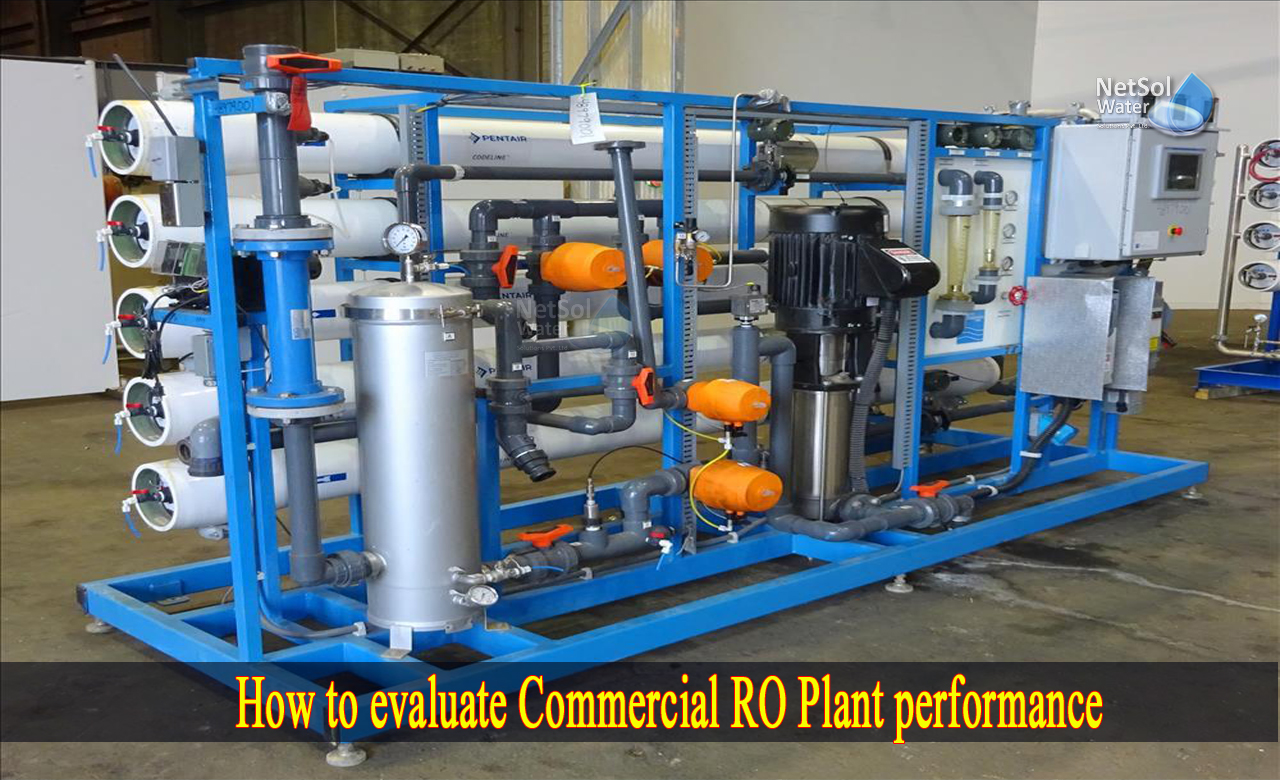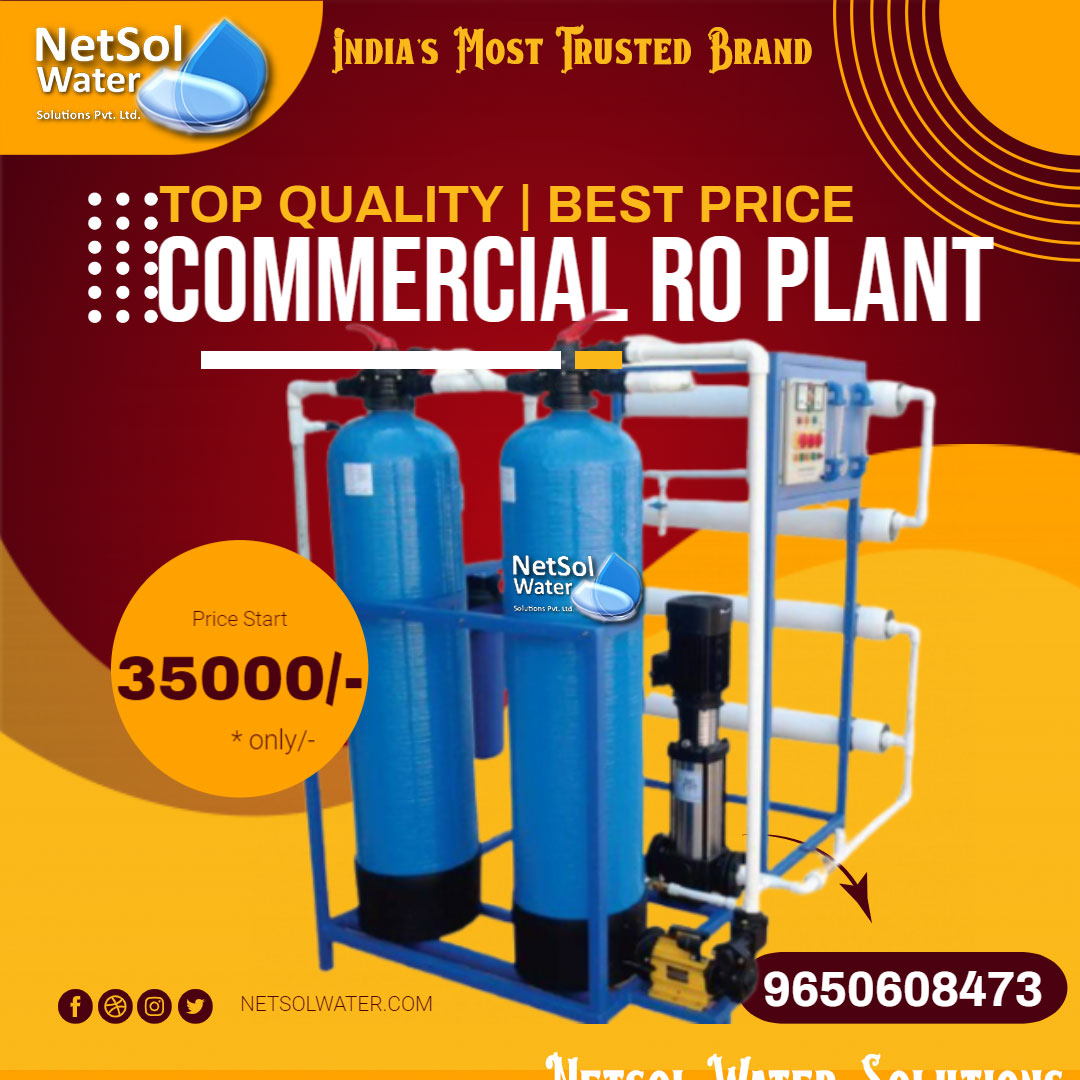How to evaluate Commercial RO Plant performance?
A few calculations are employed for both design considerations and performance evaluation of RO systems. Instrumentation in a Commercial RO Plant shows quality, flow, pressure and occasionally other information like temperature or operating hours.
The following operational criteria are required to accurately assess RO system's performance:
· Feed pressure
· Permeate pressure
· Concentrate pressure
· Feed conductivity
· Permeate conductivity
· Feed flow
· Permeate flow
· Temperature
1: Salt rejection in (%)
It provides information on the system as a whole rather than the performance of each individual membrane. The majority of feed water pollutants will be rejected by a Commercial RO system with correctly working RO membranes. The following equation can be used to calculate how well the RO membranes remove contaminants:
Salt Rejection (%)
= (Conductivity of Feed Water – Conductivity of Permeate Water)/ (Conductivity of Feed) × 100
The system works better with the higher salt rejection. A poor rejection of salt may indicate that the membranes need to be cleaned or replaced.
2: Salt passage in (%)
This represents the percentage of salts that are flowing through the RO system. The Commercial RO Plant operates more efficiently with the lower salt passage. The membranes may need to be cleaned or replaced if there is a high salt passage.
Salt Passage (%) = (1 – Salt Rejection in %)
3: Recovery (%)
The volume of water that is "recovered" as excellent permeate water is measured by percent recovery. The volume of water that is not collected as permeate or product water but rather delivered to the drain as concentrate is another way to conceive percent recovery. A higher recovery percentage indicates that you are saving more permeate water and sending less water to the drain as concentrate. However, if the recovery percentage is too high for the RO design, scaling and fouling might cause more serious issues. The formula for percent recovery is as follows:
(%) Recovery
= (Permeate Flow Rate in gpm)/ (Feed Flow Rate in gpm) x 100
4: Factor of concentration
The concentration factor is a crucial equation for the design of any Commercial RO Plant since it is connected to the recovery of the RO system. The more concentrated salts and pollutants are gathered in the concentrate stream, the more water you recover as permeate. When the concentration factor is too high for the system design and feed water composition, this can result in a larger possibility for scaling on the surface of the RO membrane.
Concentration Factor = 1/ (1 – Recovery %)
The idea is the same as that of a cooling tower or boiler. Both of these leave behind a concentrated solution with cleaned water departing the system as steam. The solubility limitations may be surpassed as the concentration rises, causing scale to precipitate on the equipment's surface.
5: Flux
It is represented by the formula
Gfd=
(gpm of permeate × 1,440 min per day) / (No. of RO elements in system × square footage of each RO element)
6: Mass balance
Your flow and quality instrumentation may need to be calibrated and this can be determined using a mass balance equation. The performance data you are gathering is useless if your instrumentation is not reading properly.
To do a mass balance calculation, you must gather the following information from a RO system:
· Feed Flow in gpm
· Permeate Flow in gpm
· Concentrate Flow in gpm
· Feed Conductivity in µS
· Permeate Conductivity in µS
· Concentrate Conductivity in µS
Mass balance equation
(Feed flow x Conductivityof Feed) = (Permeate Flow x Conductivityof Permeate)
+ (Concentrate Flow x Conductivityof Concentrate)
Note: Feed Flow = (Permeate Flow + Concentrate Flow)




